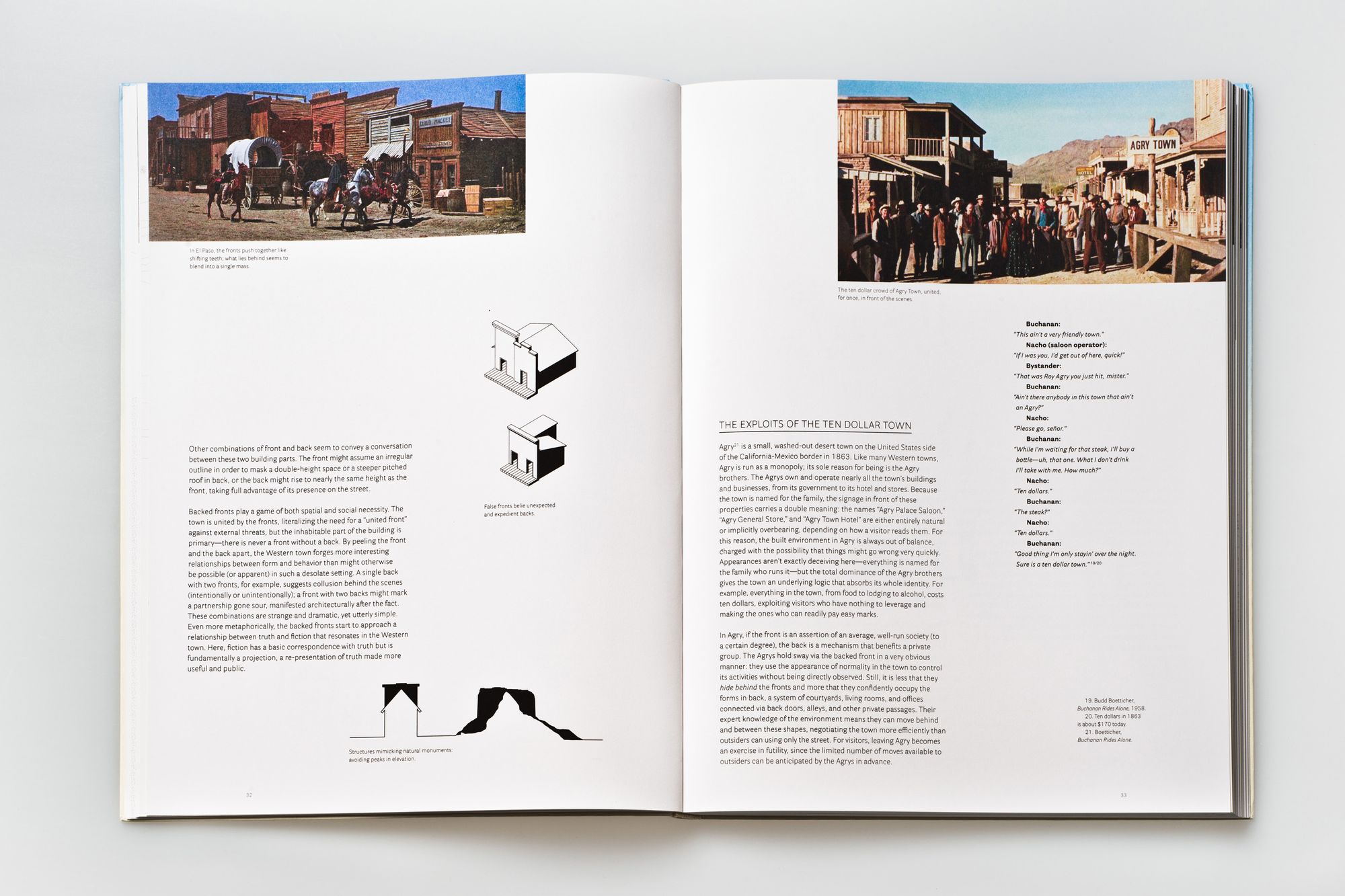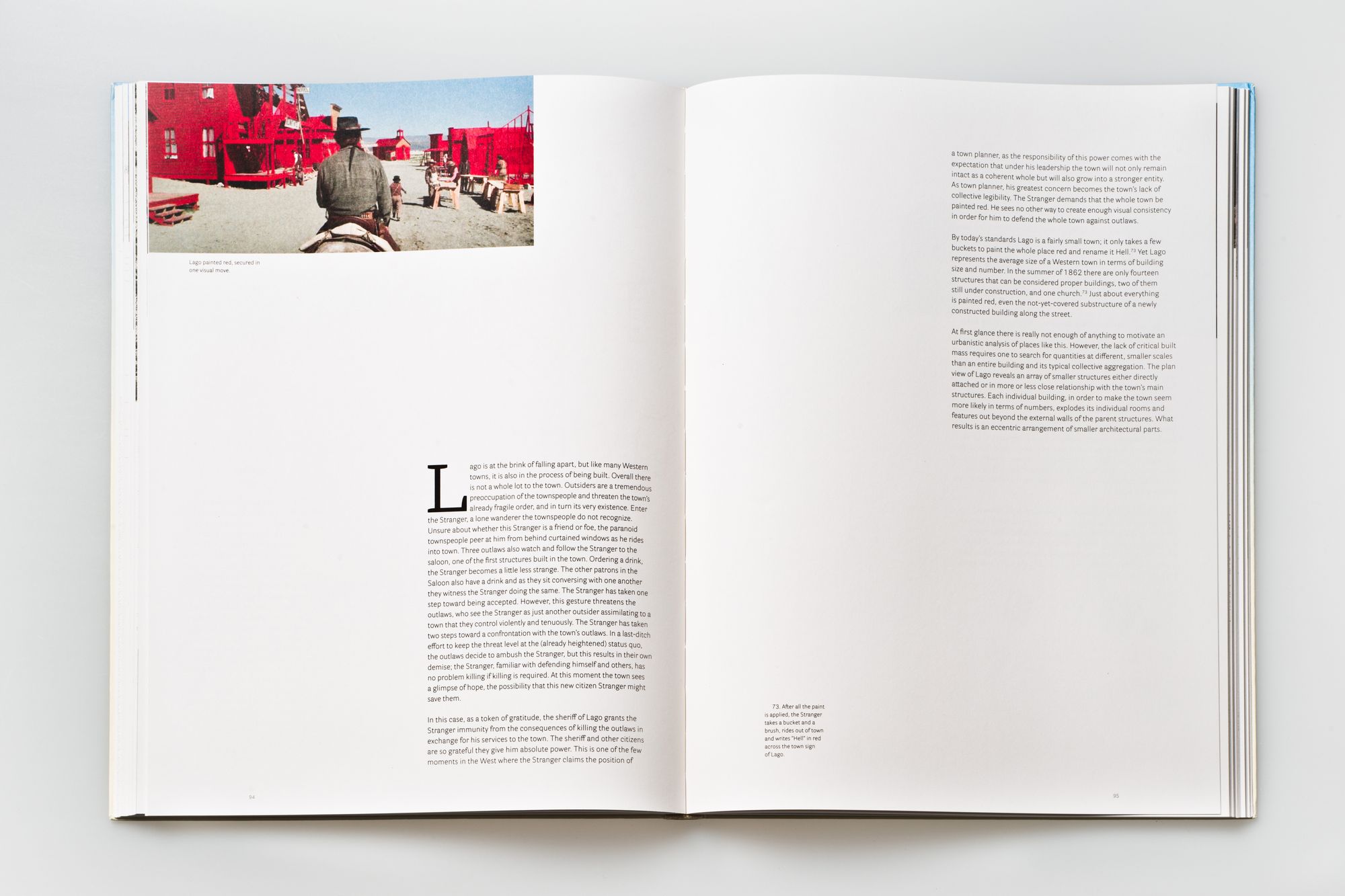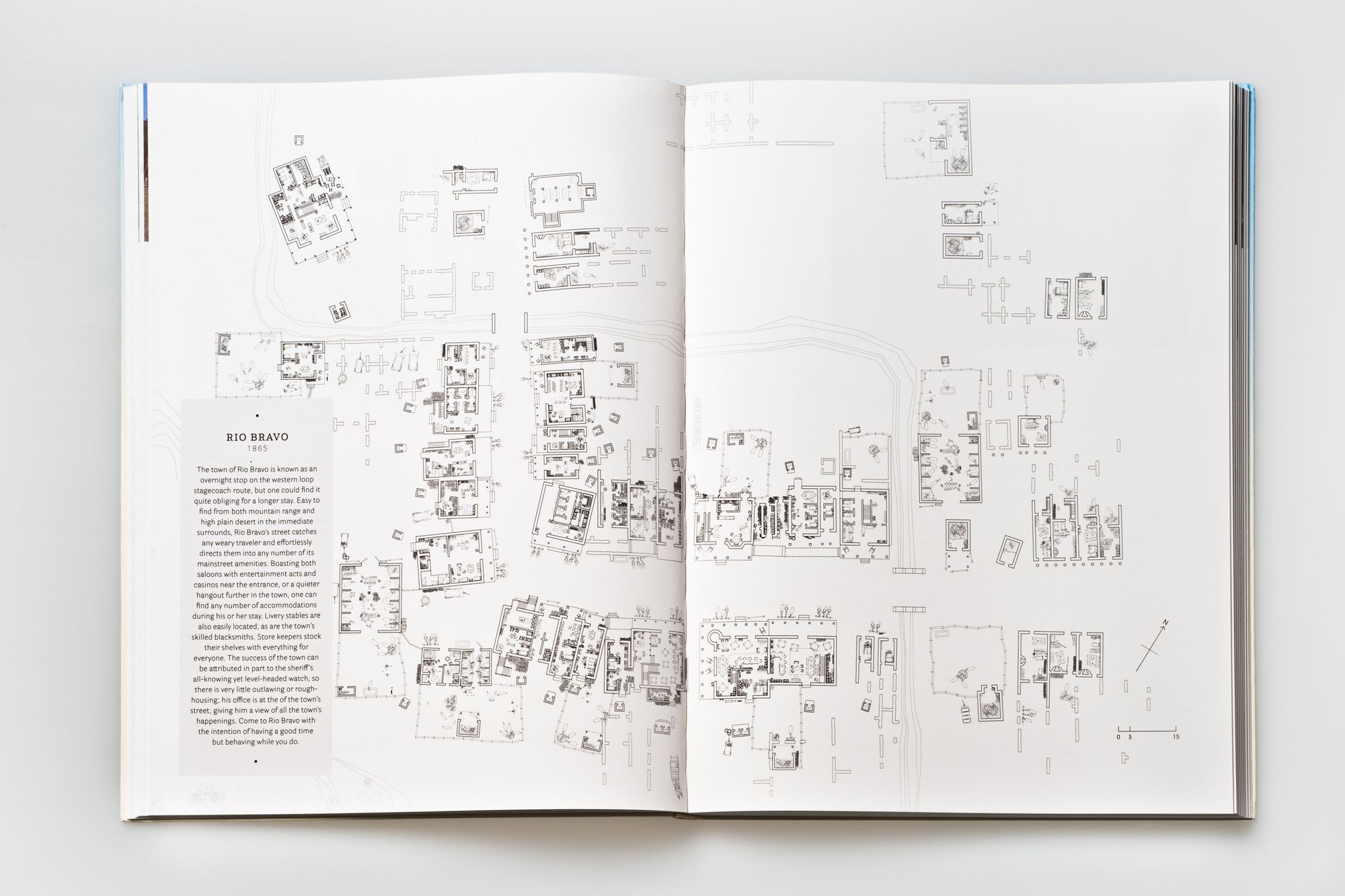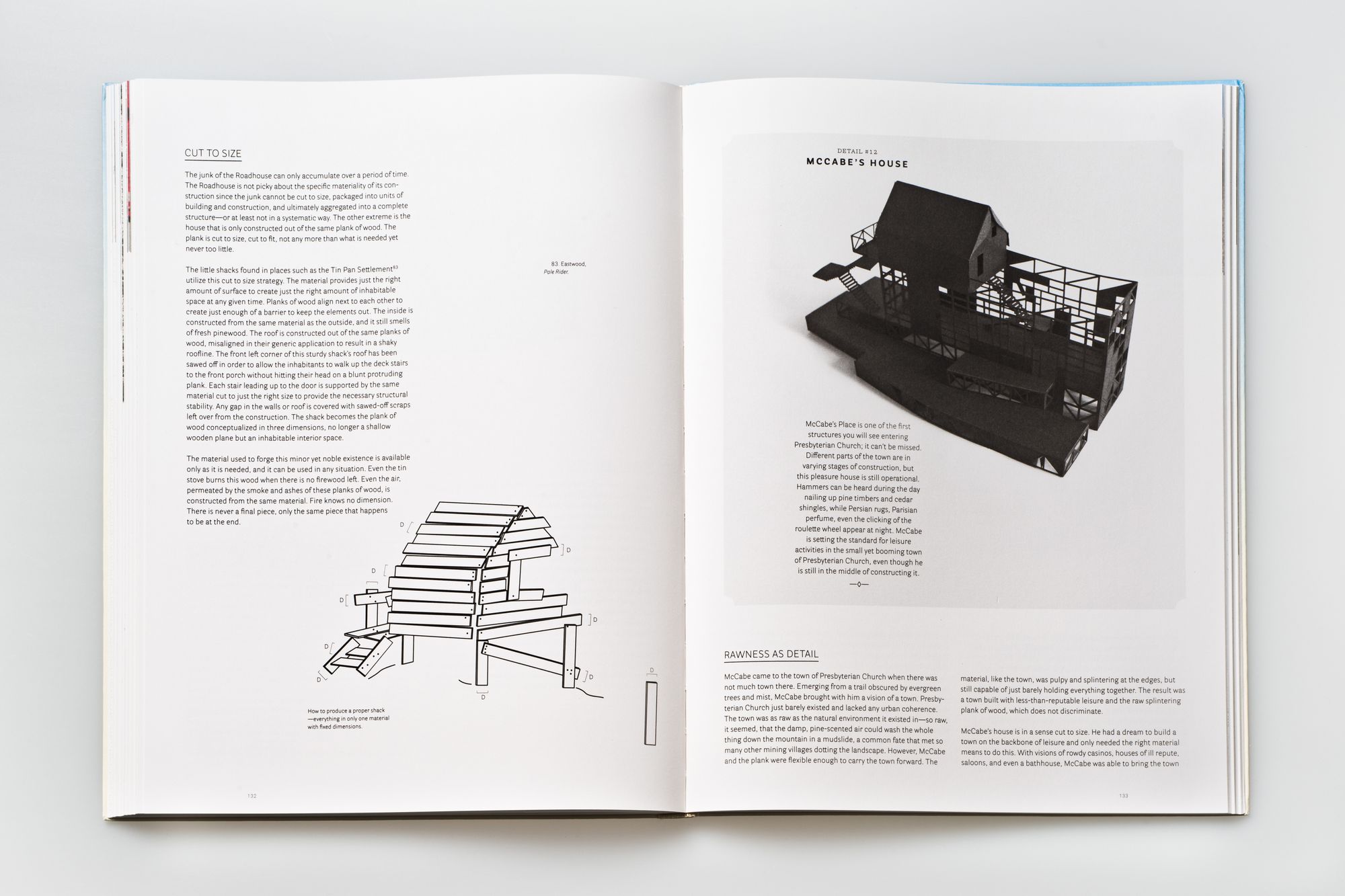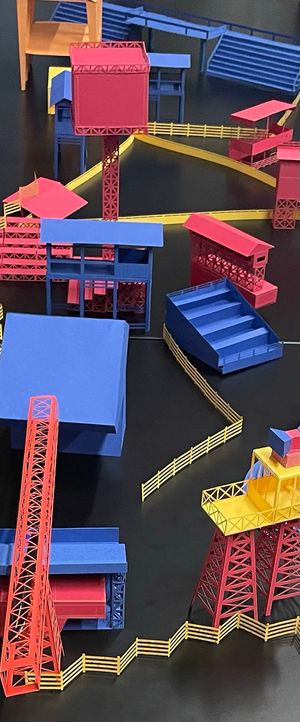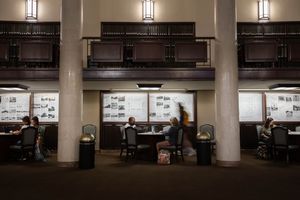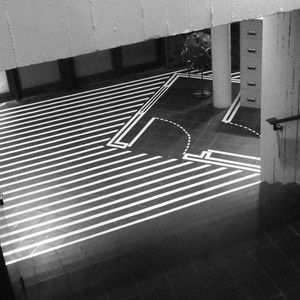“This is the West, sir.
When the legend becomes fact,
print the legend.”
—The Man Who Shot Liberty Valance (1962)
The Western town of roughly 1860–1890 exists in an ephemeral moment in American history. Always being realized but never really there, these towns entirely vanished from the prairie by the end of the 19th Century. Yet even today everyone has visited these towns, since they survive in their abstract and distilled form—through the plot-generating sets of Western movies. Somehow this (re)constructed reality is able to support these plots inherently, completely, and inexhaustibly. From the Great Plains west of the Mississippi to the foothills of the Sierra Madre, the towns of Agry Town, Rio Bravo, Sweetwater and many more are home to an unflinchingly regular set of formal arrangements, typologies, and social interactions—in other words, a clichéd but consistent host of characteristics and characters. The Western town’s integral pieces suggest that behind its simplicity lies a rich source for architectural and urban study.
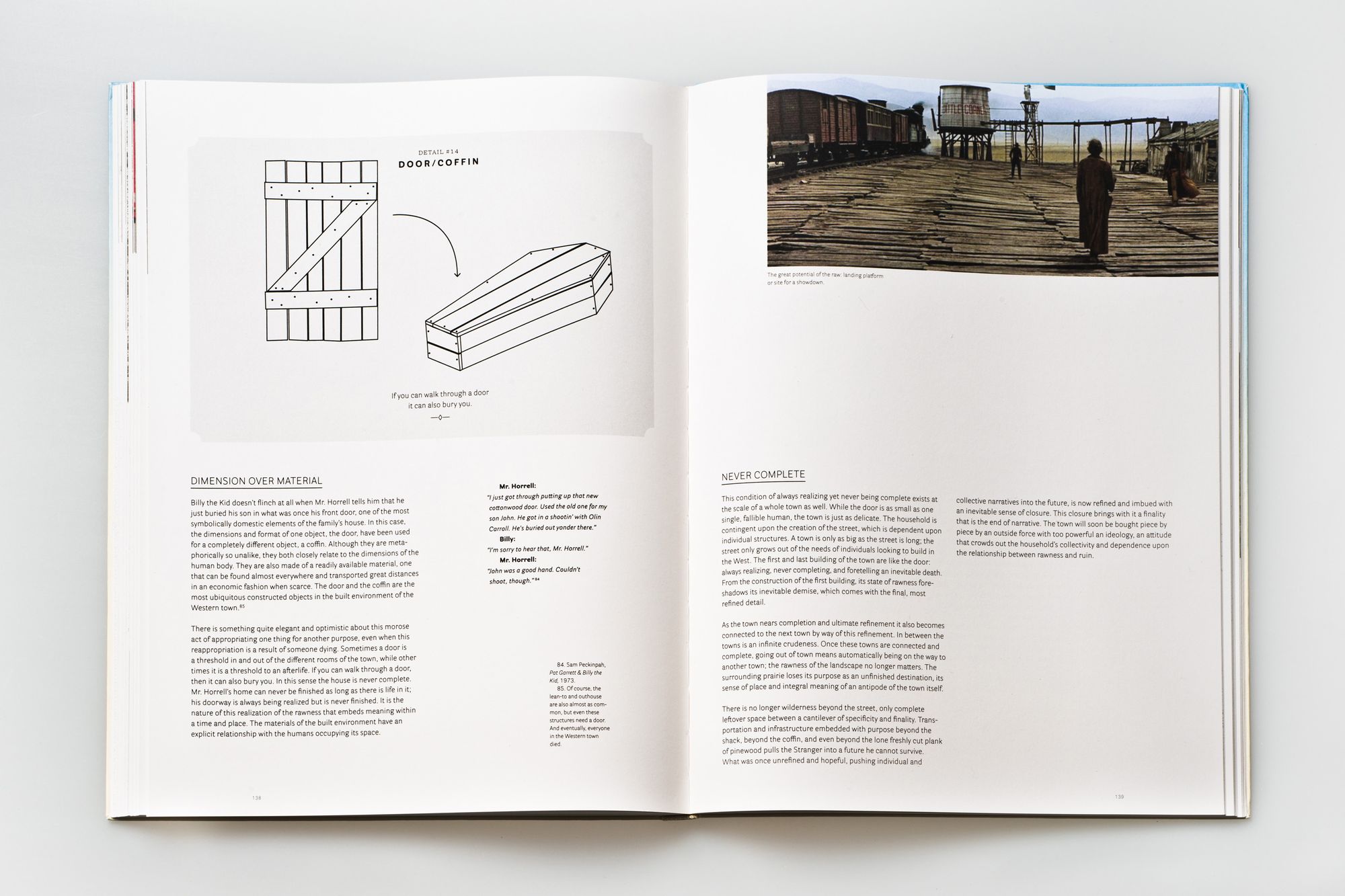
The Western Town: A Theory of Aggregation re-tells the story of twenty-two Western towns architecturally, from the scale of the lace curtain or sun-bleached wood coffin to the vast, empty desert, not in order to catalog their architectural and urban features, but rather to appreciate the slight connections, overlaps, and reciprocities between these elements.
176 pages, 160 illustrations
